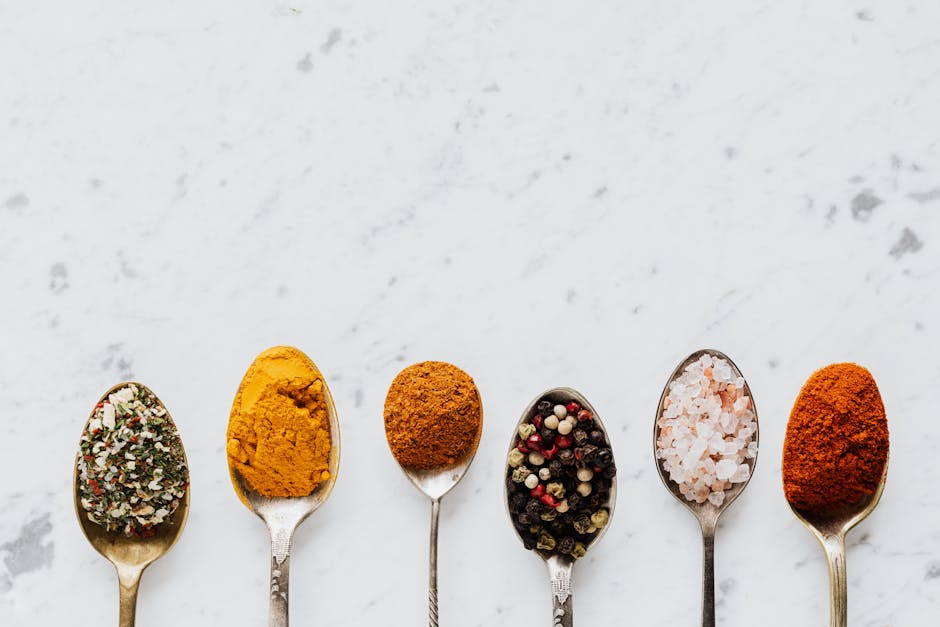Culinary Time Capsules: Preserve Family Recipes with Innovation
Have you ever found yourself sifting through a pile of dusty recipe cards, each telling a story of family gatherings, laughter, and cherished moments? Food is far more than mere sustenance; it’s a tapestry of memories woven through generations. In this modern age, where simplicity meets technology, preserving family recipes has transformed from a household chore into an innovative culinary adventure. Welcome to a world where culinary time capsules allow us to marry tradition and modern techniques like freeze-drying, fermenting, and even molecular gastronomy.
In this comprehensive guide, you'll discover how to preserve those beloved family recipes while also elevating them, ensuring that future generations can both appreciate and innovate upon our culinary heritage.
The Importance of Recipe Preservation

Let's start with the very definition of what it means to preserve a recipe. For many families, recipes serve as a backbone to their shared history. They carry flavors that evoke emotions, tales that bring back nostalgia, and dishes that connect loved ones. However, in a fast-paced world where convenience reigns supreme, traditional methods of cooking and preserving are often overlooked. The commitment to keeping these recipes alive isn’t just about cooking; it’s about cultivating a legacy.
To preserve recipes effectively while also exploring new horizons, we must consider innovative techniques. Among them are freeze-drying, fermenting, and molecular gastronomy. Let's dive into these methods and see how they can help us safeguard our culinary treasures.
Freeze-Drying: Keeping Flavors Intact

Freeze-drying is a cutting-edge preservation method that involves removing moisture from food while retaining its flavor, texture, and nutritional value. It’s particularly useful for preserving fruits, vegetables, and herbs, allowing you to enjoy the flavors of home-cooked meals long after the season has passed.
Imagine celebrating Thanksgiving with homemade cranberry sauce from your grandma’s age-old recipe, but instead of using fresh cranberries, you use freeze-dried ones. You simply rehydrate them, and voilà—your dish tastes fresh and vibrant, just as your grandmother intended.
Practical Steps to Freeze-Dry Your Recipes

-
Select Ingredients: Start with fresh herbs, vegetables, or fruits. Ensure they are ripe and free from blemishes.
-
Prep the Food: Wash, cut, and steam vegetables if necessary. For fruits, peeling and cutting into smaller pieces often helps.
-
Use a Freeze-Dryer: Home freeze-dryers are now available for consumers. Place your food in trays and let the machine work its magic.
-
Repackage and Store: Once dried, store the ingredients in airtight containers away from light and moisture.
With this method, not only do you gain shelf stability, but you also ensure that these ingredients retain their flavor profile, allowing future generations to experience those family recipes just as they were intended.
Fermenting: A Flavorful Transformation

Fermentation is much more than trendy fare; it's one of the oldest preservation methods known to humankind. This process utilizes microorganisms to convert sugars into acids, resulting in complex flavors. If you're thinking about your family’s legacy of sauerkraut or kimchi, consider harnessing the science of fermentation for preservation.
Tips for Successful Fermentation

-
Choose a Recipe: Start with a simple recipe. Pickled vegetables or fermented salsa can be great starters.
-
Use Fresh Ingredients: Always use the freshest ingredients. This will ensure the best results.
-
Monitor Conditions: Keep an eye on temperature and moistness; too little will hinder fermentation, while too much can breed unwanted bacteria.
-
Taste Regularly: Part of the fun of fermentation is tasting as it develops!
Fermentation not only extends the shelf life of your family recipes, but it also introduces new flavors. Your grandma’s secret spice blend can evolve as you experiment with different vegetables and fermentation times.
Molecular Gastronomy: Redefining Traditional Flavors

Molecular gastronomy might sound intimidating, but it's simply the application of science to cooking that can yield some astonishing results. Think of it as playing with food on a grander scale. Culinary innovators have been using this technique to give the classics a modern twist.
How to Get Started with Molecular Gastronomy

-
Invest in Key Ingredients: Common molecular gastronomy ingredients include sodium alginate, calcium chloride, and agar-agar.
-
Follow Vibrant Recipes: Seek out resources and recipes online that specialize in molecular techniques.
-
Experiment with Textures: Use techniques like spherification to create bursts of flavor.
-
Blend Old with New: Don’t hesitate to incorporate your family recipes into molecular gastronomy. Think of a classic casserole that can be multiplied into a series of flavorful foam or gel.
As you venture into this modern culinary frontier, you can honor your family history while maintaining a sense of novelty. The creative possibilities are endless.
Blending Tradition with Modernity

In reimagining family recipes, it’s essential to do so without losing their essence. Here’s where the true magic lies: blending old and new methods to create dishes that honor your family's culinary traditions while appealing to contemporary palates.
For example, consider infusing molecular gastronomy into traditional Italian risotto. Instead of a classic approach, you could introduce a creamy element via foaming techniques or present your dish in a visually striking manner with colorful purees.
Example: An Elevated Family Recipe
Let’s say Grandma had a dreamy peach cobbler recipe. You could take her filling and freeze-dry it while creating a modernist pie shell using molecular techniques. This allows you to serve it with a foam of vanilla cream, adding a whimsical and contemporary touch.
By carefully curating how you elevate traditional dishes, you keep the flavor intact and bring it into the modern culinary landscape, sparking interest from younger generations who may appreciate both heritage and innovation.
Practical Tips for Preserving Family Recipes
As you embark on this culinary journey, here are some practical tips to ensure you successfully preserve family recipes while keeping the spirit alive.
-
Documentation is Key: Start by documenting recipes in detail, including stories or memories associated with each dish. This adds value and emotional depth.
-
Collaborate with Family: Consider cooking sessions with family members. Collective memory can spark new ideas and variations while reinforcing connections.
-
Embrace Technology: Use apps or platforms that specialize in recipe preservation. Many are designed for families to share and update recipes across generations.
-
Celebrate Family Food History: Create a family cookbook to honor recipes, stories, and photographs. This not only preserves the recipes but also serves as a bonding activity.
-
Experiment Responsibly: While it’s great to innovate, be mindful of what changes may or may not suit the flavors you've grown up with.
Next Steps for Culinary Preservation
As you venture forward into the world of culinary time capsules, it’s important to remember that preserving family recipes is not merely about the food; it is about preserving the stories embedded in each dish. The journey may take time, experimentation, and collaboration. But the reward of passing down culinary legacy to future generations will be well worth it.
Take the plunge into freeze-drying, explore the world of fermentation, or set your sights on molecular gastronomy. By integrating these techniques, not only do you ensure the flavors stay intact, but you craft a narrative ripe with love, tradition, and imagination.
Final Thoughts
Food connects us all, binding communities, generations, and families together. By taking the initiative to preserve and innovate upon your family recipes, you're actively maintaining this bond while daring to explore new flavors. Culinary time capsules serve as a bridge—straddling the past while boldly stepping into the future.
So, gather your loved ones in the kitchen, cherish those family stories, and get creative with innovative techniques that transform the way we think about food. Honor your family’s culinary journey while leaving room for flavors yet to come.
For further inspiration, check out our blog on exploring global flavors and the impact of colors in cooking to enhance your culinary experience!




